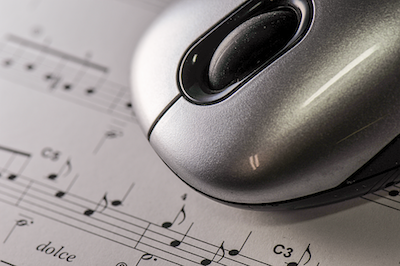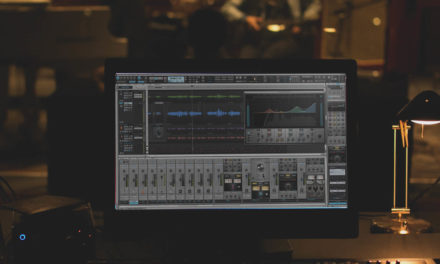There have been quite a few developments since my first post about the hows and whys of choosing notation software. But one thing that hasn’t changed is people still ask the question “Finale or Sibelius?” This invariably devolves into a popularity contest of one-word answers without a hint as to why one or the other is better. I do find it curious that it inspires such passion in so many but as I said before, it’s the wrong question
Notation software is a tool, nothing more. And as in any field, you need to pick the right tool for the job. The professional chooses the top-tier tools, which may require extensive training and practice to use at peak efficiency. A hobbyist, on the other hand, rarely needs all of the functions of professional level tools and can usually do just fine with quality, consumer grade tools that they can learn to use with a minimum amount of training. And nobody in their right mind would give a complicated piece of machinery to a child.
So it is with notation programs. The question “Finale or Sibelius?” assumes that all of us require professional level notation software. It also implies that any program that isn’t as “good” as Finale or Sibelius is deficient. Neither is true.
Let’s dispose of the original question first. There’s no question that as of this writing, Finale and Sibelius are still the top dogs and I’ve seen amazing scores done in both programs. But which program you’d prefer is more a matter of personality than anything else. Each program has its pros and cons. Finale gives you more control, but the downside is that many things that should be easy aren’t. In contrast, Sibelius tries to automate more tasks, but it can be difficult to override its defaults. It doesn’t mean either program is easier or better, just different. Professional engravers usually have a preference, but many use both. They aren’t going to turn down a job because a publisher requires one or the other.
There’s a newcomer in the engraving category, too. When I last wrote, Steinberg had hired most of the Sibelius development team, who were hard at work creating a new engraving program. That program, Dorico, has now been released. While it has great potential, it still lacks some fundamental features that mean it’s not quite ready to match up against the others. The program requires a somewhat different way of thinking, which might make the switch a bit difficult for some, but if I were just starting out, I’d give it serious consideration. I’m sure most engravers will add this to their toolbox when the time comes.
It’s important to recognize that developing expert skills in these programs takes time and they are the most expensive. Sure they are the “best,” but the only people who need this level of power are engravers and composers who are pushing the notation envelope. Composers of more conventional music whose goal is publication should also consider them, though many publishers are now accepting musicXML files which can be exported by any program.
For those of you who want an engraving program, but can’t justify the expense, a good alternative is MuseScore, a free and open source program that rivals the other professional programs. (UPDATE: MuseScore has been acquired by Ultimate Guitar, see here) Now, to be honest, I was recently challenged to complete a complex modern score in MuseScore and found there are a few things it can’t do. But, if like me, most of what you do is more conventional, you’re unlikely to run into anything that MuseScore can’t handle. It is a little slower than the others, but no more difficult to use, and it will be sufficient for all but the most demanding users. Frankly, since it’s free, I’m not sure why it isn’t on every computer in every music lab.
I’m probably going to get some pushback on this, but I have to say it; kids have no business using either Finale or Sibelius. Even the entry-level versions are still programs designed for professionals; scaled down, yes, but otherwise not much simpler. Fortunately, there are a couple of programs designed specifically for education. NoteFlight and Flat.io are easy to learn and use and can handle the notation needed in the classroom. They don’t have anywhere near the power of the engravers and don’t purport to. Both programs are cloud-based, so they run on anything including Chromebooks and tablets and they also integrate directly with Google Classroom. The other feature they share is that they are both designed for collaboration. Students can easily share their work with other students in the class or around the world. There are free versions with a limited number of scores and features and paid versions use a reasonably priced annual subscription model.
There’s one other program I talked about last time that doesn’t quite fit either category, Notion. In reality, it’s a cross between a notation program and a DAW. As you may know, I wrote a book on it. Before taking on the book project I had only looked at Notion briefly, but as I got into it, I found that it just seemed more musical. It’s the only program that felt like working with a pencil, something that’s been reinforced by the addition of handwriting recognition in the latest version. Its playback is by far the best of all of the notation programs, which aside from being aesthetically pleasing, also offers teaching opportunities as well. Working in Notion is as fast and easy as the education programs, but with more power. Notion also has the best iOS app. It’s very capable, sounds great, and the files are interchangeable with the desktop version. The downside is that the program lacks the tools needed to create publisher-ready scores. But as with the education programs, that’s not the focus.
Unfortunately, sooner or later, the bias towards engraving affects all notation programs. Lately, Notion has added features that provide more control over layout, but at the cost of slowing down my workflow. But for now, I still am using Notion for most of my everyday notation work.
Choosing a notation program shouldn’t be about which program is most popular or has the most features. It needs to be about which program will allow to you do what you need to in the most efficient and comfortable manner. If you choose an engraving program, you’ll be able to do almost anything, but understand that that entails more time, effort and expense than other options that may work just as well for you and your students. For most users, MuseScore is more than powerful enough. Noteflight or Flat.io are ideal for the K-12 classroom. And for everyday use, my preference is still Notion, especially when writing jazz and pop music.
If you’re still confused or would just like to know more, I’m offering a free webinar, “Choosing a Notation Program.” I’ll demonstrate each of the programs, discuss the features of each in more depth and answer your questions. Just click here to sign up.




